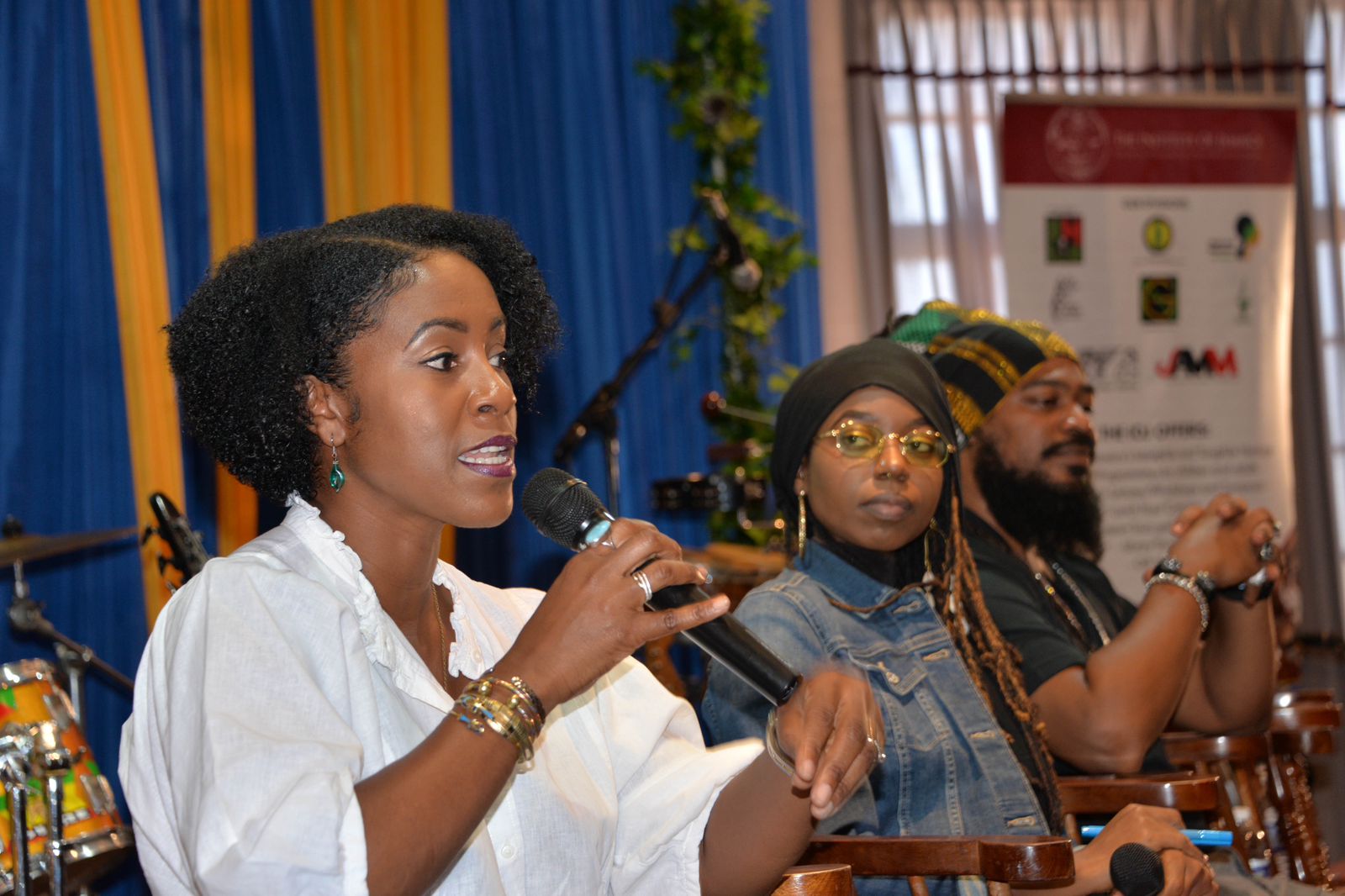Reclaiming physical space is resistance. Challenging the status quo is resistance. Defining Arts and Culture as a driver of social and economic transformation is resistance. Putting artists and cultural workers in a position of prominence and status in our society is resistance. Intentionally betting on what is most powerful about us as a country – OUR CULTURE – even though it arguably is created by who we consider to be from the working classes of society – is resistance. Deciding to change our city, our economy and empower our most culturally vibrant communities – is resistance. Imagining a new future together, and taking action together from the ground up, not the top down to realize this new future – this is an act of resistance.
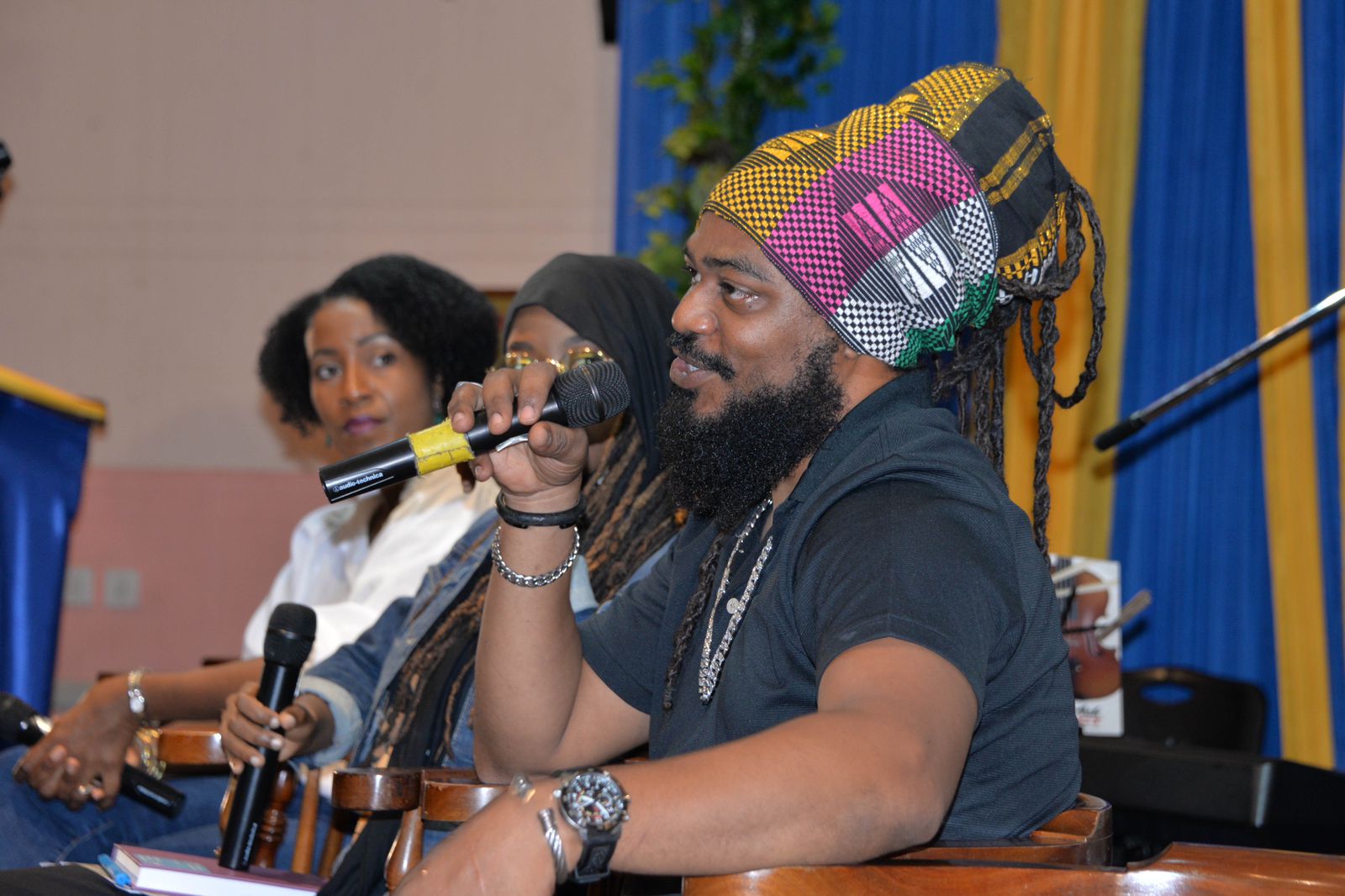
If you ask me on any given day whether I’m “into” politics, I, like many creatives, would say that I am not political. Our politics is framed in a limiting way, as it forces us to think about development in choppy 4-year cycles instead of the 25- and 50-year strategic cycles that lead to real transformation and sustainable national development. To be creative, one must be in a certain state of mind and often I find that it is necessary to block out the partisan chatter that we all too often find ourselves embroiled in as a society.
But “politics”, from the Greek word “politika”, is defined simply as “affairs of the cities”. In a very literal sense, politics is just the set of activities associated with making decisions in groups and managing the power relations among individuals. The Irish political scientist Michael Laver, put it this way:
“Politics is about the characteristic blend of conflict and co-operation that can be found so often in human interactions. Pure conflict is war. Pure co-operation is true love. Politics is a mixture of both. “
If I were to abide by the true definition of politics, then the work that we at Kingston Creative are engaged in is very political. Artists and creatives are actively changing the affairs of the city with every mural, every film, every book and every cultural tour.
Kingston Creative is a movement that came into being 7 years ago almost to the day, so let me say first Happy 7th Anniversary to the entire Kingston Creative family. I vividly remember being upstairs in the attic in my home in London, making that call to my cofounder Allan Daisley who was in Miami. My hand was shaking, and I was absolutely full of trepidation. This vision was so big, and I just didn’t want to sound unhinged. I didn’t even want to speak it out loud, but it was so urgent that I felt that I would burst if I didn’t.
Even as a possibility thinker and an eternal optimist, I know how the world works. I am a dark-skinned black person, I am a woman, one with an unremarkable last name at that and no generational wealth to fund a massive vision, so who were we to think that we could really shift the affairs of the city?
But we stepped out in faith and developed our 10-year plan with David Mullings and Jennifer Bailey. I moved back home to Jamaica, and we took a small another step forward, first presenting the concept at UWI’s Imagine Kingston conference in 2017. We formed a core team with Doris Gross and Dr. Kim Marie Spence. Very rapidly, a group of 100 volunteers and creatives came on board, who all played a critical role in hosting Artwalk festivals and monthly meetups, painting murals and driving this vision forward.
We registered a nonprofit company in 2019, then a charity organization, and were able to raise money to fund operations. This would not have happened without the support of who we term the First 50 Founders, individuals and companies that donate one million a year because they want to be a part of the transformation of Downtown and the economic growth that they believe creative entrepreneurs and the Orange Economy can deliver.
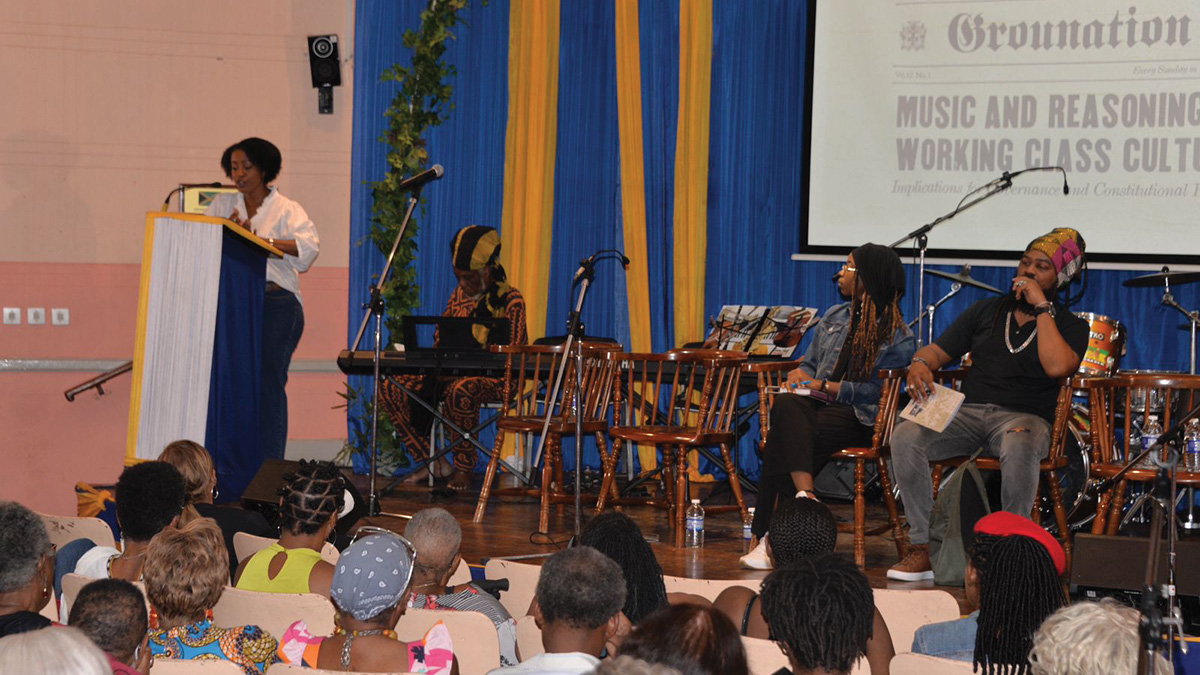
Since 2017, we have painted 101 murals, opened a Downtown coworking space, launched the Artwalk -a monthly public arts festival and created a cultural tourism destination in Water Lane that is now listed on Tripadvisor. This street art pathway connects the Institute of Jamaica museums on East Street with the National Gallery of Jamaica on Orange Street, and the talent of these artists has brought many visitors into this part of the city. Our main partners in these developments are the Tourism Enhancement Fund (TEF), Sherwin Williams, the KSAMC, the Development Bank of Jamaica (DBJ), the CB Facey Foundation, and the Kingston Restoration Company (KRC), but it is important to note that none of this would have started without the time and money contributed by ordinary Jamaicans, both here and in the Diaspora.
Ours is a vision of “people and place” and with partners including IDB Lab, DBJ, PIOJ, JAMPRO, HEART and Sagicor we invest heavily in developing creative people. We have delivered over 5,500 free training opportunities, enabled 9 artists to go overseas on travel grants, developed an ecommerce platform called Kulcha Connect, developed an online directory of creatives called Caribbean Creative Network where the world can now find over 409 creatives – and hire them. We have hosted four editions of Best Pitch forward, the first pitch competition exclusively for Jamaican creatives where $2.2 million in seed capital has been granted to creative entrepreneurs.
Formalization is critical to the development of the ecosystem, and Kingston Creative, with the support of IDB, JIPO and Companies Office of Jamaica, has helped 104 creative entrepreneurs to register their businesses and intellectual property. We conceptualized a regional programme called CATAPULT (www.catapultsarts.org) which gave support and grants of $73 million JMD to 1,535 creatives from 27 Caribbean countries during the COVID-19 years, when artists around the region were at their most vulnerable. This we accomplished with a tiny 4 person team and by partnering with Open Societies Foundation, American Friends of Jamaica and Barbados-based nonprofit, Fresh Milk.
We have engaged with 20 Downtown Communities and 8 Downtown Kingston community tourism locations have been supported by the tours that we offer. Most of all, we have made a small dent in shifting the public perception of Downtown Kingston, along with our media partners the Jamaica Gleaner and the Jamaica Observer – both of whom are fully committed to turning around the old city and reducing the stigma.
If there are any secrets to our success, the first is, without question, people. We have a committed, talented team, an amazing Board, and many advisors and truth tellers that keep us on the right track. We also have visionary partners and advocates within the private and public sector and multilateral sphere, not least of all the Ministry of Culture and its agencies like the Institute of Jamaica and the Jamaica Music Museum – we are thankful for all the great people that work there.
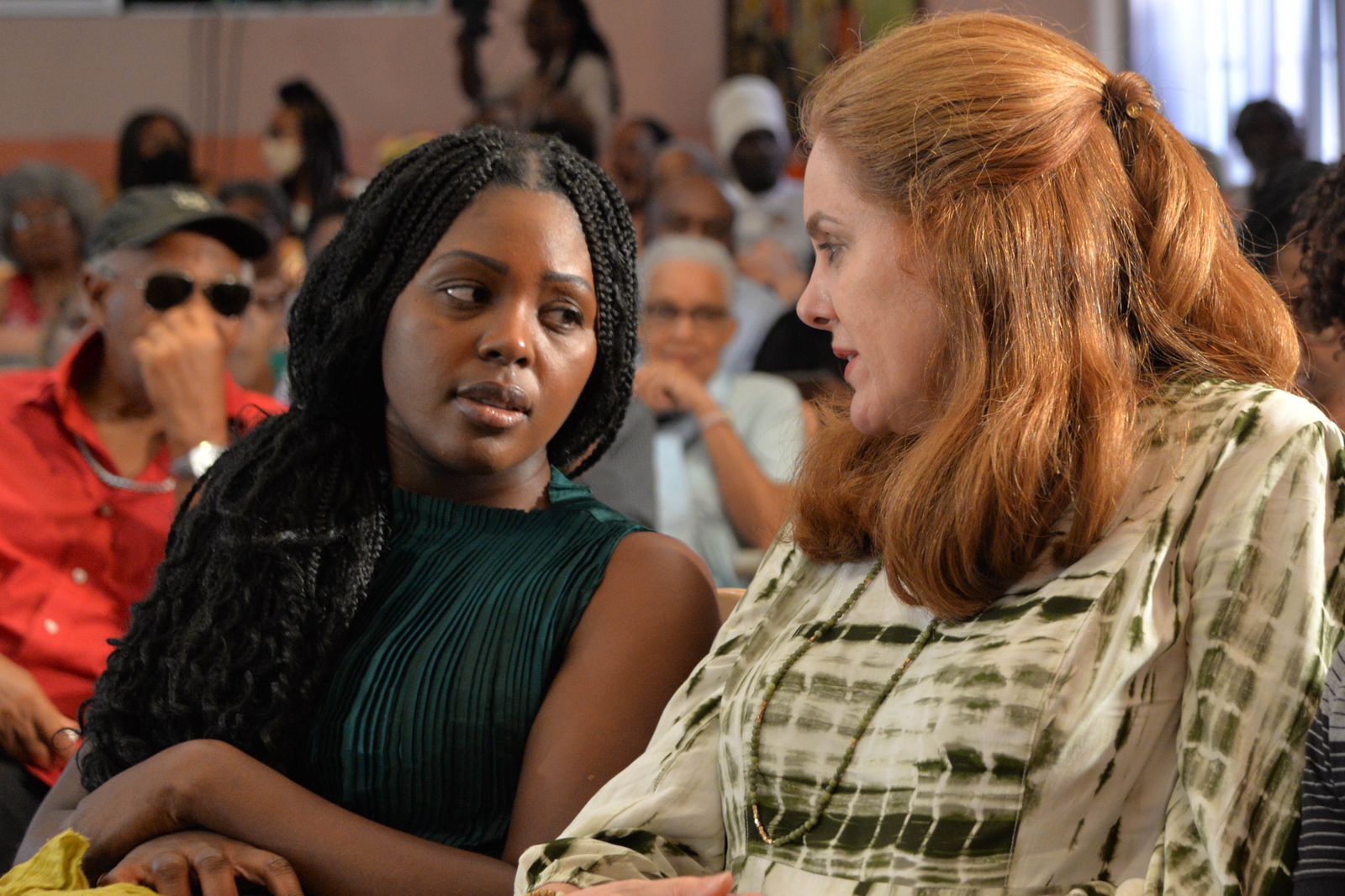
Our second secret is imagination. We give ourselves the room to imagine a positive, creative future for Jamaica. We balance that big imagination with practicality and persistence.
Our third secret is small consistent action. The movement is not known for flashy pronouncements and massive projects, but we come together to take tiny actions, sometimes imperceptible baby steps to get us closer to that future that we imagined. We stay centred by never forgetting our mission of empowering creative people, so that they can succeed, gain access to global markets, and create wealth for themselves and their communities. We hold as a beacon to inspire us, our vision of Kingston as the Creative Capital of the Caribbean. We always know who we serve – a community of creatives and the beautiful old city of Downtown Kingston.
Often, I am asked, where did all this come from? The story starts in Glasgow Scotland, where I was born to a Trinidadian mother and a Jamaican father in the era of Black power, surrounded by Caribbean people and some legendary parties where the music of Bob Marley played late into the night. I lived with my grandparents there in the 80’s, who took me to bookstores, where I spent hours just sitting on the carpet luxuriating in books which are still my first love, with visual arts, drawing and painting as a very close second. I grew up walking to school and roaming the streets freely in a safe city. We frequented the art galleries and museums, and it was normal to see free public art in theatres, public spaces, parks and gardens, where friends played, families met and memories were made.
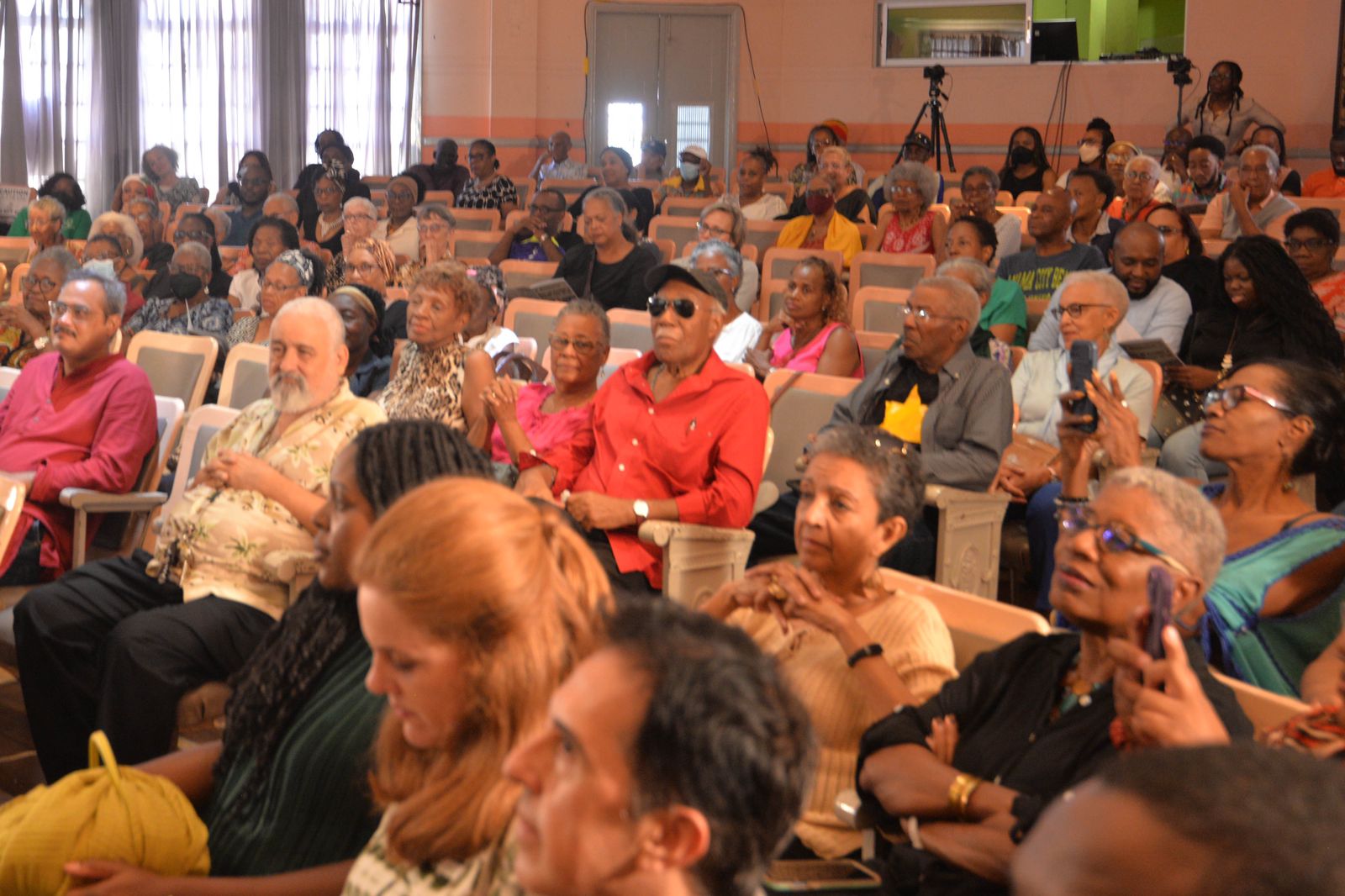
The second chapter of the story moves to the USA, where I became a licensed professional structural engineer working on multimillion dollar city redevelopment and historical preservation projects in Washington DC. I worked my early years in Miami, in the Design District, on 2nd Avenue, near Little Haiti, where now a famous Art District called Wynwood stands, and the change is incredible to have witnessed. There is also some valuable Jamaican public sector experience, the years when I was the Director of Technical Services in the Ministry of Water and Housing, responsible for over 90 joint-venture housing developments across the island and the squatter management programme, which took me into some very depressed communities in Montego Bay and of course Downtown Kingston. I have worked in private sector corporations like Gracekennedy and Digicel, both Downtown-based companies, where skills in strategy, projects and managing multimillion dollar USD budgets were honed. Finally, I am an entrepreneur coming from a long line of entrepreneurs starting with my Grandma in Falmouth (Big up to Miss Richie!) and I started Bookophilia in 2008, a bookstore and café on Hope Road where I started to really understand the needs of the creative community and where Kei Miller, Marlon James and Anthony Winkler read, and where a young Protoje, Jah 9 and Kabaka Pyramid would have all performed.
The idea for Kingston Creative came from these diverse experiences, and it is fueled by the collective passion that every other single person in the movement has for this cause. And now, in year 7, in abandoned spaces and the neglected back lanes of Downtown Kingston, we see a real Art District emerging. Upstairs in Swiss Stores, above the F&B Downtown restaurant, we have building a creative hub coworking space – a Home for creative entrepreneurs, where they can have the space, training, investment, funding, recognition and the respect that they need to succeed.
The approach of using Art for Social and Economic transformation is not unique. Street artists have changed neighbourhoods and governments have invested in the Orange Economy and cultural tourism and reaped the benefits before. Other cities have invested in building the infrastructure, supported placemaking projects and invested in revitalization. This is nothing new – but it is a proven strategy that works. If we can apply it here in Jamaica, it can have a number of critical benefits:
- It can uplift artists and artisans from inner city communities, not just in Downtown but in similar communities across the island.
- It can diversify our economy through growing the Cultural and Creative Industries like film, fashion, culinary arts, dance, literature, and music.
- It can make our tourism product more resilient – cultural tourism is a viable and lucrative addition to the offering of sun, sea and sand.
- It can instill new pride in the parts of ourselves and our capital city that we try to hide.
- It can employ young people, offering a viable alternative for them to gangs, violence and scamming.
Kingston Creative deals with issues of grassroots empowerment and use of public space, which is disruptive. It challenges colonial mindsets and notions of ownership and frankly speaking, these structures just aren’t challenged enough in our society. In the Arts, gatekeeping was the norm, where a select few can determine which artist is worthy of accolades and which might be permitted entry into elite gallery spaces, and which might earn. But when the gallery becomes the street, young unknown artists are selected through an open call, and then these young artists are hired, just on the basis of their work, not the validation of gatekeepers – and they are paid millions for their talent. This is resistance.
In closing I want you to close your eyes and imagine with me for a second. Imagine if we had a legal and governance framework that really facilitated the success of our creative people, and that promoted the status of the artists, and the growth of the Orange Economy. Imagine that we had a policy, plan and funding for the development of cultural spaces across the island, rules that ensured that our built heritage can’t be knocked down by private interests, and that we encouraged the transformation of privately held, under-utilized spaces into viable creative spaces.
Imagine further that it was a national priority to build fit for purpose creative spaces, theatres, museums, new galleries and state of the art festival spaces. Imagine millions of people coming to our island to appreciate reggae and other cultural offerings. What if we provided the necessary makerspaces, studios and creative spaces for both the production and consumption of the arts?
What if we advocated for the access that creatives need; access to visas, ease of movement and travel, and challenged the geo-restrictions, so that our artists had full access to the technology and digital tools that they need to compete globally.
What if creative careers and creative education was a year-round priority and that pesky “A” in STEAM was consistently present, and the school kids that are the dancers, actors, singers, songwriters, musicians and poets, didn’t feel like outcasts. Imagine if these talented kids knew that there was an ecosystem to ensure their success in Jamaica, just knew that they could… like anyone else… work hard at their craft, buy a house, educate their kids, have full retirement funds, health and life insurance and if god forbid, they did fall ill, that their family could deal with it in a dignified manner without handouts and charity.
Imagine or just a second, what would happen if our young artists, especially those from inner city communities, knew that they were valued and that there was a real place in society for them, that they didn’t have to migrate, and that we valued them and that as a country, we were strategically organized to promote their success.
I often ask myself, where would we be as a country if we really believed in ourselves and in our cultural supremacy (which is so obvious to the rest of the world) and not only believed, but followed through in a structured, practical way. Where would we be today, if instead of simply singing along to “One Love”, we embedded the necessary guiding principles, policies and legal frameworks for development of the Cultural and Creative Industries and real transformation for us as a nation.
Thank you for imagining with me. This small act of imagination and action – this is resistance.
